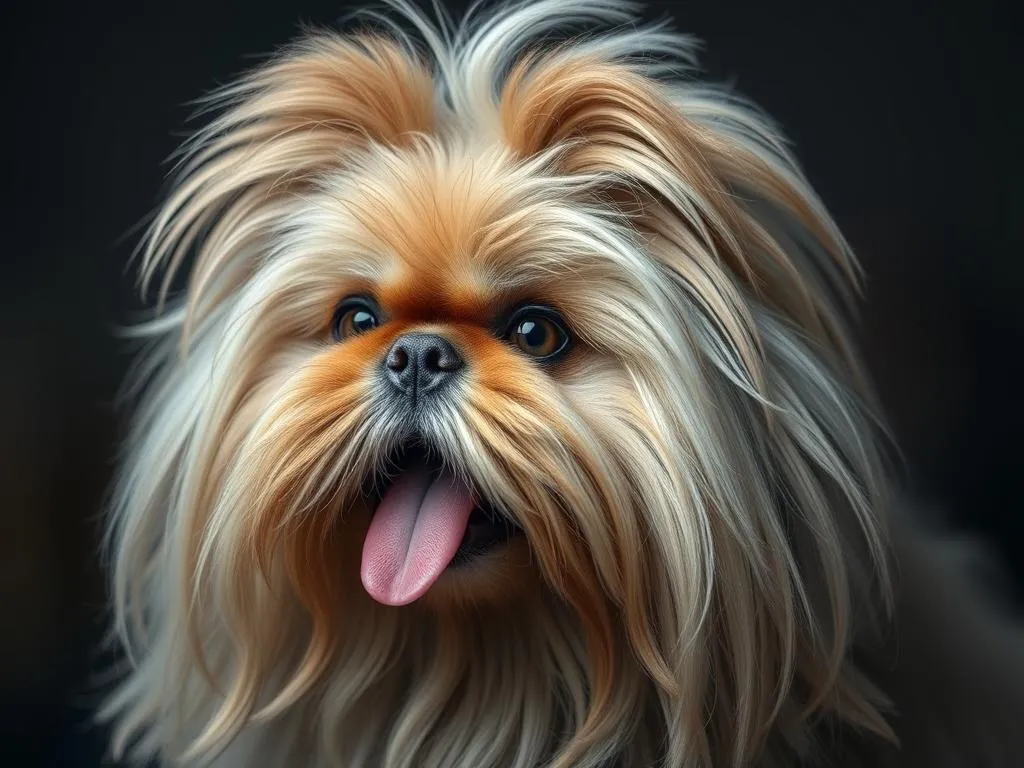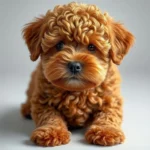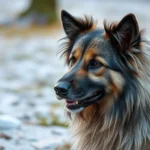
Introduction
Dog breeds represent the unique tapestry of traits, characteristics, and histories that define our canine companions. Understanding different breeds is crucial for potential owners as it helps in selecting a dog that aligns with their lifestyle and preferences.
The Schnekingese is a charming breed that brings a blend of beauty, intelligence, and affectionate nature. Originating from a rich historical background, the Schnekingese has charmed dog lovers worldwide. This article delves into the fascinating world of the Schnekingese, exploring its history, characteristics, care needs, and more.
Understanding Dog Breeds
What is a Dog Breed?
A dog breed is a specific group of domestic dogs with particular physical and behavioral traits that distinguish them from other breeds. These traits may include size, coat type, color, and temperament.
Breeds are classified based on various factors such as size, function, and origin. Groups like herding, working, sporting, and toy breeds help potential owners navigate their choices.
The Importance of Breed Knowledge
Knowledge about dog breeds is vital for making informed decisions when welcoming a dog into your home. Different breeds have distinct traits, exercise needs, and temperament characteristics that can significantly influence the dynamics in your household.
Understanding breed-specific traits can help potential owners find the right fit for their lifestyle. For instance, an active family may prioritize a breed with high energy levels, while a quieter household might prefer a more laid-back dog.
The Schnekingese Breed
History and Origin
The Schnekingese is a relatively new breed, developed in the early 21st century. This breed is a cross between the Pekingese and the Schnauzer, created to combine the best traits of both parent breeds. The goal was to produce a companion dog that is not only adorable but also intelligent and easily trainable.
Over time, the Schnekingese has gained popularity among dog enthusiasts for its unique appearance and friendly nature. Despite its youth, this breed has made a significant mark in the hearts of many dog lovers.
Physical Characteristics
The Schnekingese typically stands between 10 to 14 inches tall and weighs around 10 to 20 pounds, making it an ideal size for families and individuals living in apartments.
Coat Type and Colors
The breed usually boasts a medium-length coat that can be straight or slightly wavy. Common colors include:
- Black
- Tan
- Brindle
- Cream
- White
Distinctive Features
One of the most recognizable features of the Schnekingese is its expressive face, characterized by large, round eyes and a short muzzle. Its ears are long and feathery, adding to its adorable appearance. The breed’s sturdy build and well-proportioned body contribute to its overall charm.
Temperament and Personality
The Schnekingese is known for its sweet and affectionate nature. This breed is typically friendly, making it an excellent companion for families, singles, and seniors alike.
Interaction with Families and Children
Schnekingese dogs are great with children, displaying a playful demeanor that encourages interaction. Their gentle temperament makes them suitable for families, provided that children are taught to handle them with care.
Compatibility with Other Pets
This breed generally gets along well with other pets, including dogs and cats. Early socialization is crucial to ensure that they develop friendly relationships with other animals.
Care and Maintenance
Nutrition
A balanced diet is essential for the health and well-being of your Schnekingese. High-quality dog food formulated for small breeds is recommended, ensuring it meets their nutritional needs.
Common Dietary Concerns and Solutions
Be mindful of weight management, as this breed can be prone to obesity. Regularly monitor their food intake and consult your veterinarian for personalized dietary advice.
Grooming Needs
The Schnekingese requires regular grooming to maintain its coat’s health and prevent matting.
Coat Care and Grooming Frequency
Brushing should be done at least once a week, with more frequent grooming during shedding seasons.
Bathing Tips and Tools
Use a gentle dog shampoo and be cautious not to wash them too frequently, as it can strip natural oils from their skin.
Exercise Requirements
While the Schnekingese is a small breed, it still requires daily exercise to stay healthy and happy.
Daily Exercise Needs
Aim for at least 30 minutes of exercise each day, which can include walks, playtime, or short training sessions.
Recommended Activities and Games
Engaging activities like fetch, tug-of-war, and puzzle toys can provide mental stimulation as well.
Health Considerations
Common Health Issues
Like all breeds, the Schnekingese can be prone to specific health issues, including:
- Hip dysplasia
- Eye problems
- Allergies
Genetic Predispositions
Regular veterinary check-ups can help monitor these potential issues and maintain your dog’s health.
Veterinary Care
Routine veterinary care is essential for the longevity and well-being of your Schnekingese.
Routine Check-ups and Vaccinations
Schedule annual check-ups and keep vaccinations up-to-date to prevent common diseases.
Importance of Dental Care and Hygiene
Dental health is vital for this breed, so regular teeth brushing and dental treats can help avoid dental diseases.
Lifespan and Aging
The average lifespan of a Schnekingese is around 12 to 15 years.
Signs of Aging and Care Tips for Senior Dogs
As your dog ages, watch for signs such as decreased energy, stiffness, or changes in appetite. Adjust their diet and exercise routine accordingly, and consult your veterinarian for senior-specific care recommendations.
Training the Schnekingese
Basic Training Tips
Training is essential for the Schnekingese, as it helps establish good behavior and strengthens the bond between owner and dog.
Importance of Early Socialization
Expose your Schnekingese to various environments, people, and other pets during its early months to promote confidence and friendliness.
Recommended Training Techniques
Positive reinforcement methods, such as treats and praise, work best for this breed. Consistency and patience are key to effective training.
Behavioral Issues
Common behavioral problems in Schnekingese may include barking, separation anxiety, and stubbornness.
Solutions and Preventative Measures
Address these issues with early training and socialization. If problems persist, seek advice from a professional dog trainer.
Advanced Training Opportunities
Once basic training is established, consider teaching your Schnekingese tricks and commands.
Tricks and Commands
Fun tricks like “roll over” or “play dead” can be enjoyable for both you and your dog.
Agility and Obedience Training
For those interested in more structured activities, agility and obedience classes can provide excellent physical and mental stimulation for your Schnekingese.
Living with a Schnekingese
Ideal Living Conditions
The Schnekingese is adaptable and can thrive in various living environments.
Best Housing Environment
They do well in apartments or homes, as long as they receive sufficient exercise.
Yard Space Requirements
While a yard is not necessary, having access to a safe outdoor space for playtime is beneficial.
Socialization Needs
Socialization is vital for the Schnekingese to develop into a well-rounded pet.
Importance of Socializing with People and Other Animals
Regularly introducing your dog to new experiences, people, and pets helps reduce anxiety and promote a friendly disposition.
Recommended Socialization Experiences
Consider dog parks, pet-friendly events, and playdates with other dogs to provide a variety of social interactions.
Traveling with a Schnekingese
Traveling with your Schnekingese can be a delightful experience if you prepare adequately.
Tips for Traveling Safely with Dogs
Ensure your dog is secured in a pet seatbelt or crate during car trips. Always have water and snacks on hand for longer journeys.
Preparing for Different Environments
Familiarize your dog with new environments gradually, and carry comfort items like their favorite blanket or toy to ease any anxiety.
Conclusion
The Schnekingese is a delightful breed that combines beauty, intelligence, and a loving nature. With its unique history, captivating physical traits, and friendly temperament, it makes for an excellent companion for families and individuals alike.
Understanding the care, training, and health considerations associated with this breed can help prospective owners make informed decisions. If you are considering adding a Schnekingese to your family, you are on the path to a fulfilling and joyful companionship.









